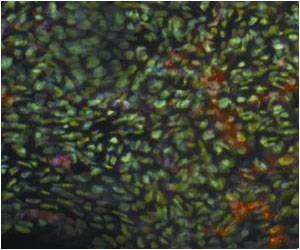
"We think mTOR could function as an Achilles heel," says study co-author Eric Raabe, M.D., Ph.D., an assistant professor of pediatrics, oncology and pathology at the Johns Hopkins Kimmel Cancer Center. "It drives cancer growth, but when mTOR is inhibited, the tumor falls apart." The work was described Nov. 7 in the journal Neuro-Oncology.
Overall, brain tumors affect more than 4,000 children each year in the U.S., and they are the leading cause of cancer deaths in children, according to Raabe. Low-grade gliomas are the most common group of tumors of the central nervous system in children. Current treatments for these tumors include surgery and chemotherapy, which often cause significant side effects. Many of these tumors are located in areas like the optic pathway, where they can't be easily removed by surgery without causing damage, including blindness.
In addition to vision loss, some of Raabe's patients have endured paralysis or learning problems as a result of the tumor or treatment. "Even though these tumors are considered 'low grade' and not particularly aggressive, many patients suffer severe, life-altering symptoms, so we desperately need better therapies," says Raabe.
For the study, the Johns Hopkins investigators studied tissue samples from 177 pediatric low-grade gliomas, including the most common type -- tumors called pilocytic astrocytomas -- from patients treated at Johns Hopkins and other centers. They also tested the effect of blocking mTOR with an investigational agent known as MK8669 (ridaforolimus) in two pediatric low-grade glioma cell lines.
The mTOR pathway has been shown to be active in a variety of cancers, and drugs that block proteins in the pathway, such as rapamycin, are widely available. The pathway signals through two protein complexes, mTORC1 and mTORC2, which lead to increased cell growth and survival.
Advertisement
The scientists also found that the mTOR-blocking drug caused up to a 73 percent reduction in cell growth over six days in one cell line, and up to a 21 percent decrease in cell growth over four days in a second cell line.
Advertisement
Rodriguez and Raabe say they hope to build on the research in animal models and test additional inhibitors.
Source-Eurekalert












